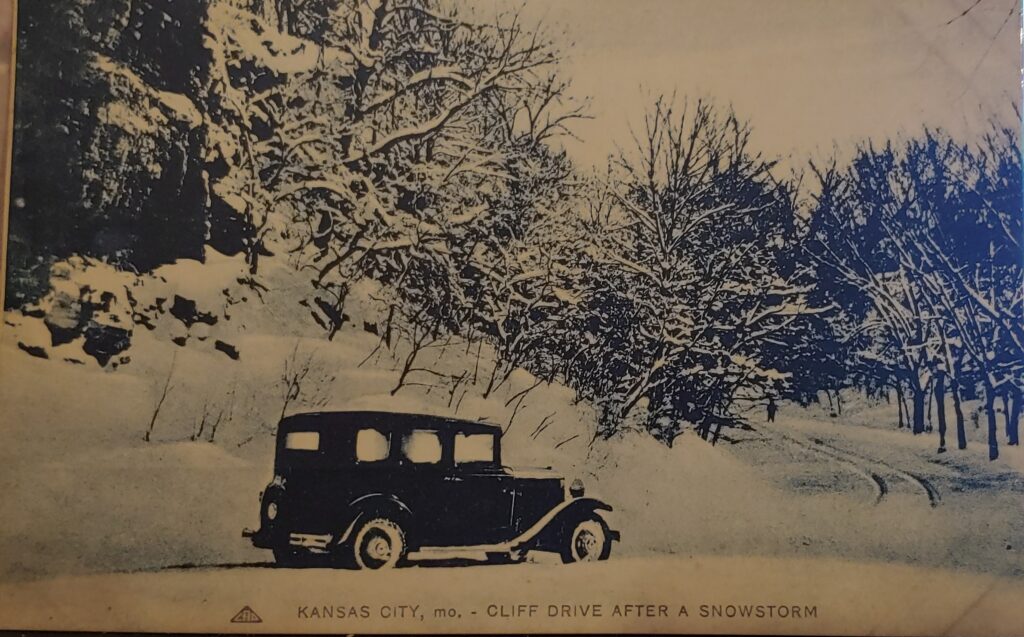
The cliffs located in Historic Northeast Kansas City offered noted Landscape Architect George Kessler a great challenge. Kessler, for whom the park that runs along the rocky bluffs north and east of downtown is named, had a great dream of developing Kansas City’s terrain and natural beauty with parks and boulevards encircling the entire city. With the backing of the City’s first Park Board led by August R. Meyer, Kessler set to work on Cliff Drive, thought by some to be too rocky and rugged even for goats to climb.
The first section of the drive was completed and opened in 1900, meandering through the wooded hills of then-named North Terrace Park. The first section was between The Paseo and Prospect Point with the two eastern and western sections added later. Upon completion, the 5.9-mile drive cost roughly $750,000, a princely sum in those days. Pictures from the time show laborers and horse and mule teams pulling wagons to haul the tons of rock and dirt necessary to construct the drive.
A souvenir booklet put out by the Board of Park Commissioners of Kansas City in 1914 stated, “Cliff Drive, the drive that has made Kansas City’s park and boulevard system famous, meanders through North Terrace Park for its entire length and when completed to the Indian Mound will be, with its approaches, 5.98 miles in length. The first 0.46 miles of this drive was completed in 1900. When all the drives in North Terrace Park are completed, there will be 8.06 miles of the most picturesque drives in this country, every foot of which will be a surprise and a delight to the visitor and a pride to the resident of the city.”
The drive was lit by gas lights spaced roughly 100 feet apart. In a letter to the Park Board, Kessler wrote, “We are charged with the duty of developing a plan that shall not only meet present needs, but future wants.”
This sepia toned postcard, entitled “Cliff Drive After a Snowstorm” was published by John Straley, one of a series of cards he published in the late 1920s and early 1930s showing various locations in Kansas City. Straley, a local photographer, published the postcards from his apartment at 213 N. Mersington Avenue, right here in Historic Northeast.
















